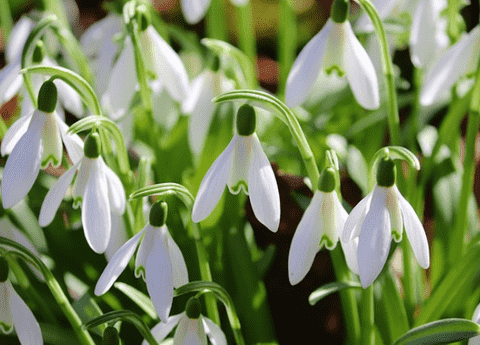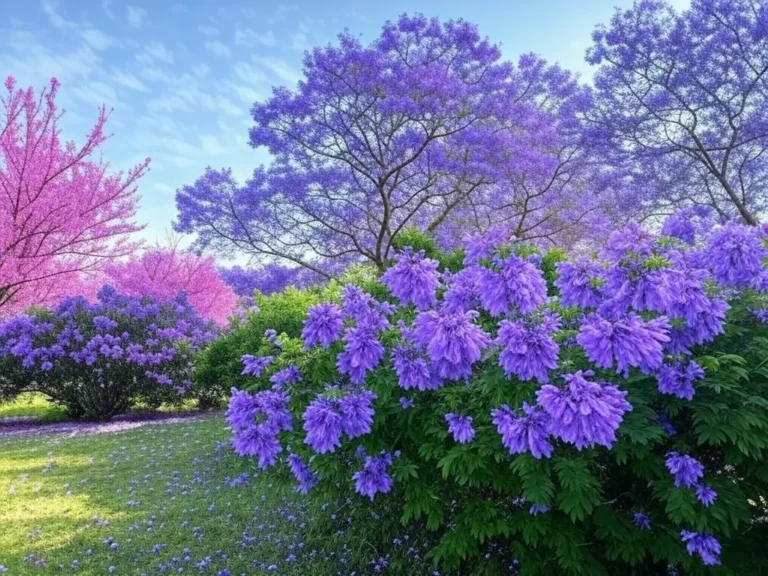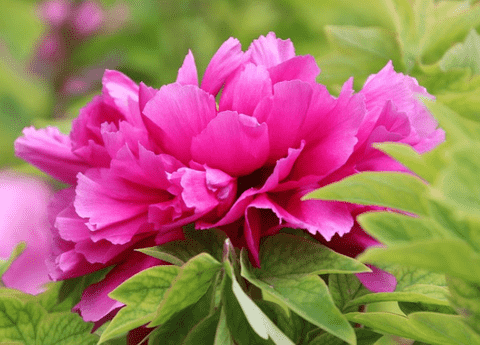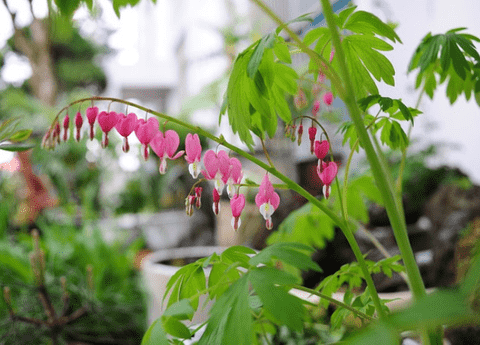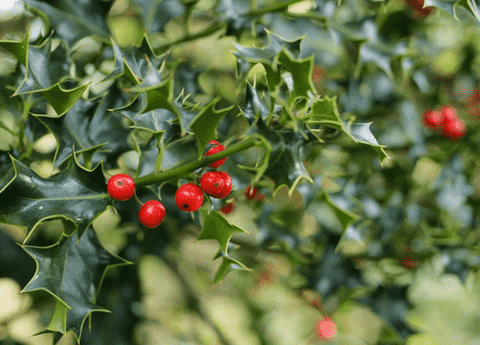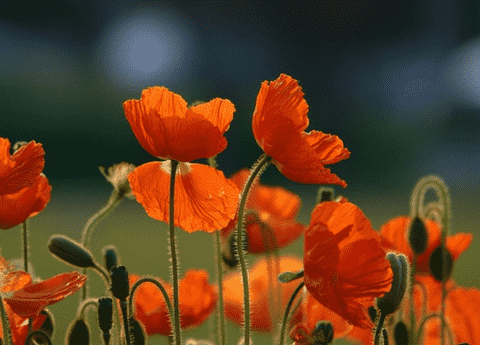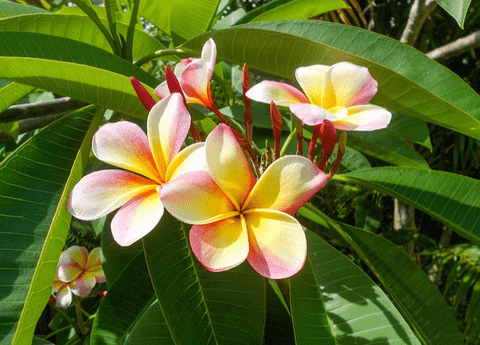The Ultimate Snowdrop Gardening Guide : Tips and Tricks for Thriving Blooms
Table of Contents
Snowdrops, with their delicate white petals and resilient nature, are a beloved addition to many gardens, heralding the end of winter and the promise of spring. These charming flowers, often regarded as the first beacon of new growth, symbolize renewal and hope when the cold months begin to fade. For gardeners and horticulturists alike, growing snowdrops can be a rewarding experience that enriches the garden landscape, offering a stunning display of blooms when little else is in flower. Their quiet elegance and stoic nature create a sense of peace amidst the chaos of other blooming plants.
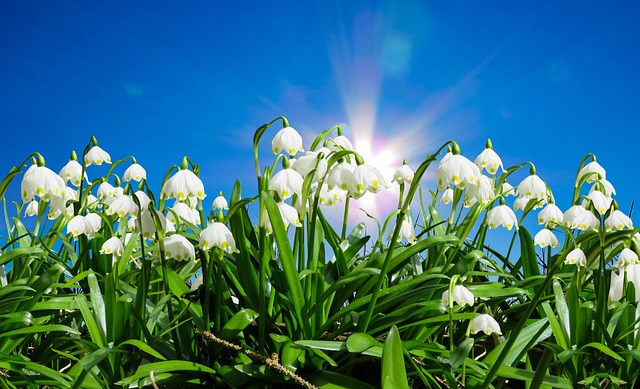
In this ultimate snowdrop gardening guide, we will delve deeply into the essential tips and tricks for nurturing snowdrops, ensuring they thrive and bring delightful charm to your garden. From understanding the fascinating intricacies of snowdrop care to mastering the most effective garden tips for snowdrops, this guide will equip you with the comprehensive knowledge needed to cultivate these enchanting flowers successfully. We will explore various facets of snowdrop gardening, addressing common challenges and providing solutions to foster healthy growth. Whether you’re a seasoned gardener or a newcomer eager to explore the world of snowdrop gardening, this extensive resource is designed to inspire, inform, and empower you in your gardening journey.
Understanding Snowdrop Basics
Let’s begin by demystifying some snowdrop basics to ensure successful cultivation.
Snowdrop Characteristics
Snowdrops, scientifically known as Galanthus, are small, bulbous perennials prized for their remarkably early blooming season and their striking white flowers that often stand out against a barren winter backdrop. A hallmark of early garden flora, their blossoms typically consist of three prominent outer petals that gracefully arch around a trio of shorter, inner petals adorned with distinct green markings. This unique and symmetrical structure gives snowdrops their iconic and immediately recognizable appearance, reminiscent of a bell.
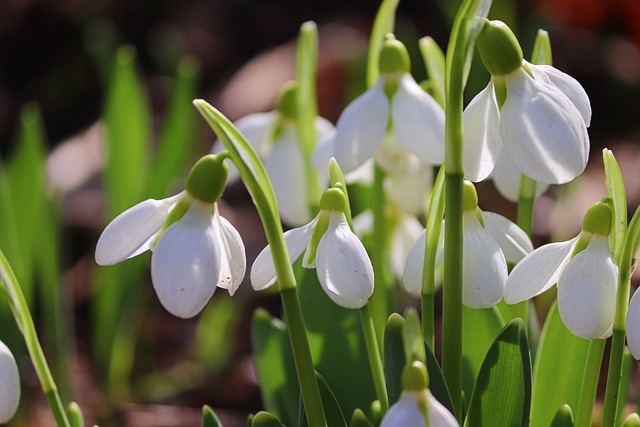
One of the most appealing and sought-after characteristics of snowdrops is their impressive ability to withstand cold temperatures, which allows them to bloom as early as January in some regions, heralding the arrival of spring. Due to their hardy nature, they become a versatile choice for various planting schemes. Snowdrops thrive magnificently in well-drained soil and are equally comfortable basking in a mix of sunny and partially shaded areas. Generally, snowdrops reach about 3 to 6 inches in height, making them ideal candidates for borders, rock gardens, and pockets of springtime interest along pathways. Understanding these fundamental characteristics is crucial for effective snowdrop care, as it informs gardeners on the best conditions, guidelines, and practices for successfully growing snowdrops in any garden setting.
Ideal Growing Conditions
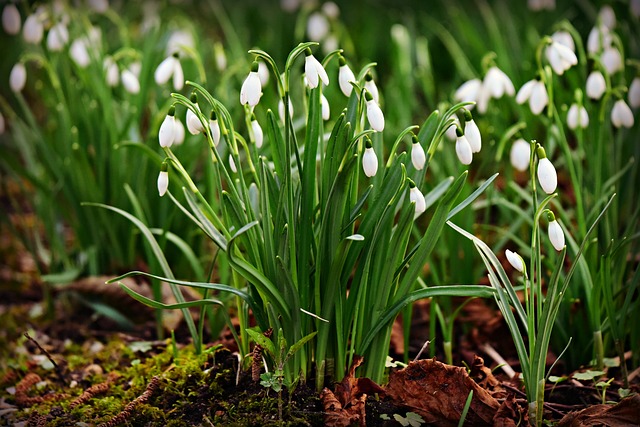
Understanding optimal conditions is essential for cultivating healthy snowdrops.
Snowdrops flourish in meticulously maintained environments that mimic their natural woodland habitat. To nurture snowdrops effectively and encourage robust growth, it is essential to provide them with well-drained soil, rich in invaluable organic matter that nourishes and supports their development. Soil that retains an excess of water can lead to bulb rot, potentially endangering the plant, so ensuring good drainage is crucial for their health and longevity.
Furthermore, snowdrops prefer slightly acidic to neutral pH levels, which can be achieved by incorporating natural amendments such as leaf mold or well-rotted compost into the soil. These additions not only balance pH levels but also enhance soil fertility and structure. In terms of light, these adaptable plants thrive in various lighting conditions, ranging from full to partial shade, making them particularly well-suited for planting under deciduous trees, where they can bask in sunlight before the canopy fills in and shades the area in the height of summer.
While snowdrops are hardy and can tolerate numerous cold conditions with relative ease, they benefit significantly from a protective mulch layer in colder climates to shield them from extreme temperature fluctuations, thus creating a stable environment conducive to growth. With this understanding of ideal growing conditions, gardeners can skillfully craft a nurturing and supportive environment for their snowdrops, enhancing their chances of producing a vibrant and impressive display of blooms each spring.
Essential Snowdrop Care
Moving on to practical care tips to maintain your snowdrops.
Planting and Watering Tips
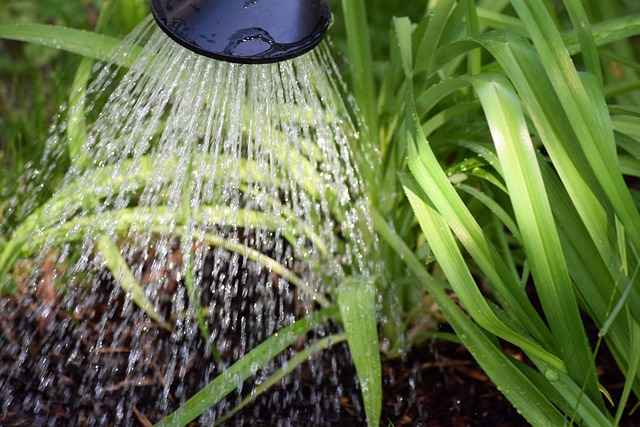
Timing and method are crucial in ensuring successful planting and care for snowdrops.
When embarking on planting snowdrops, timing holds the key to robust growth and thriving plants. The optimum period to plant snowdrops is in the fall, allowing them to establish roots and acclimate before winter sets in. This timing ensures that the bulbs are well-situated to absorb nutrients and moisture needed for springtime development. Bulbs should be planted at a measured depth of about 3 inches and spaced 2 to 3 inches apart to allow sufficient room for growth and prevent competition for resources.
If you’re planting snowdrop bulbs that have been out of the ground for an extended period, rejuvenate them by soaking in water for a few hours before planting to revitalize them and boost their growth potential. When it comes to watering snowdrops, it’s crucial to strike a careful balance that acknowledges their needs without overwhelming them. Snowdrops require consistent moisture, especially during their lively growing season from late winter to spring. However, they should not become waterlogged, as this can hinder growth and lead to rot.
Adequate watering during dry spells is vital, but the soil should be allowed to dry out slightly between watering sessions to prevent rot and encourage a healthy root system. By diligently following these planting and watering tips, you can ensure that your snowdrops have the best possible start, promoting vigorous growth and abundant blooms in your garden setting.
Pest and Disease Management
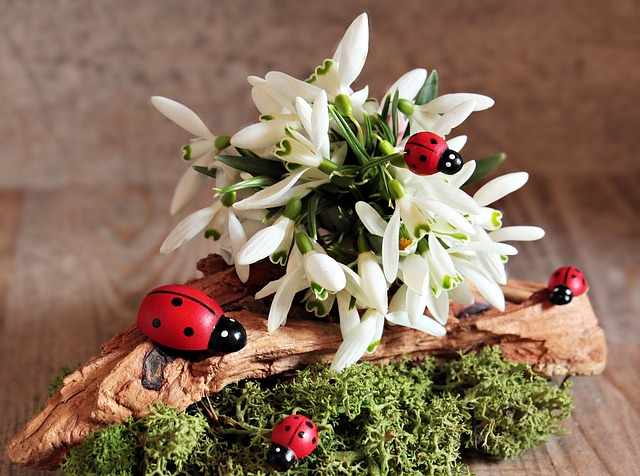
Proactive care is necessary to protect snowdrops from potential hazards.
Snowdrops, although relatively resilient, are not immune to threats and can still fall prey to certain pests and diseases that may hinder their flourishing. One common issue is the presence of bulb mites, which can cause significant damage to the bulbs themselves and ultimately hinder growth. To manage and prevent bulb mites, ensure proper planting practices and consider using a miticide if infestations occur, keeping pest populations under control.
Another concern is grey mold, a fungal disease that tends to thrive particularly in damp and humid conditions. This disease can adversely affect the leaves and flowers, leading to unsightly rot if not addressed promptly. To prevent the spread of grey mold, ensure good air circulation around the plants and avoid overhead watering, which can exacerbate the issue. Additionally, slugs and snails may feed on the leaves, creating unattractive damage, so using barriers or organic slug pellets can help protect your snowdrops from these pests.
Regular inspection and rapid removal of any affected plant parts are essential to keep these issues at bay, preserving the aesthetic appeal and health of your garden. By methodically implementing these pest and disease management strategies, you can help ensure that your snowdrops remain healthy and continue to grace your garden with their lovely and enduring blooms, season after season.
Enhancing Snowdrop Blooms
Advanced techniques for elevating your snowdrop display.
Fertilization Techniques
Fertilization plays an indispensable role in nurturing snowdrops and maximizing their bloom potential, enhancing them to their full glory. Snowdrops benefit immensely from a balanced approach to feeding that aligns closely with their natural growth cycle, ensuring they receive essential nutrients at critical developmental phases.
The most opportune time to fertilize snowdrops is in early spring, as they begin to emerge victoriously from the ground, ready to delight with their pure, white blossoms. A balanced, slow-release fertilizer with equal parts nitrogen, phosphorus, and potassium can provide the necessary nutrients for robust and healthy growth. Incorporating organic options such as rich compost or well-rotted manure can also enrich the soil more naturally, improving its structure and fertility to the benefit of the snowdrops.
It’s important to apply the fertilizer evenly around the base of the plants, taking great care to avoid direct contact with the delicate foliage to prevent any potential burn. An additional light feeding in the fall can help prepare the bulbs for the demanding winter months, ensuring they retain vigor and vitality. By adopting these well-planned fertilization techniques, gardeners can improve the vigor and flowering power of their snowdrops, ensuring a beautiful, lasting, and memorable display in the garden.
Seasonal Maintenance Tips
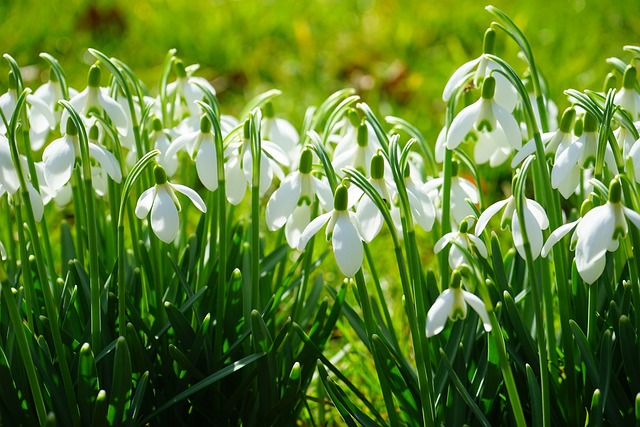
Attentive seasonal care keeps snowdrops thriving annually.
To ensure snowdrops continue to thrive and produce vibrant, lively blooms year after year, comprehensive seasonal maintenance is essential. In early spring, carefully remove any dead leaves and debris from around the plants to improve air circulation and reduce the notable risk of disease. This practice allows for healthier environments and enables snowdrops to draw upon fresh resources for development.
After their enchanting flowering period, it’s essential to allow the foliage to die back naturally, as this process helps replenish the bulbs for the next growing season, fortifying their eventual bloom. Be sure not to cut back the leaves prematurely, as they play a critical role in photosynthesis and nutrient storage, contributing to the plant’s overall health and readiness for the future. During the summer, when snowdrops enter their dormant phase, take the opportunity to check for potentially problematic overcrowding. If the clumps become overly dense, consider lifting and strategically dividing the bulbs to better optimize space and growth potential.
Come autumn, it’s an ideal time to refresh the mulch layer around the snowdrops, protecting the bulbs from inauspicious winter frosts and conserving valuable moisture. Regular, well-considered seasonal care, tailored intricately to the snowdrop’s natural growth cycle, enhances resilience and flowering potential, ensuring your garden remains a stunning, inviting, and welcoming space throughout the year, filled with the magic and allure of these delicate winter heralds.

